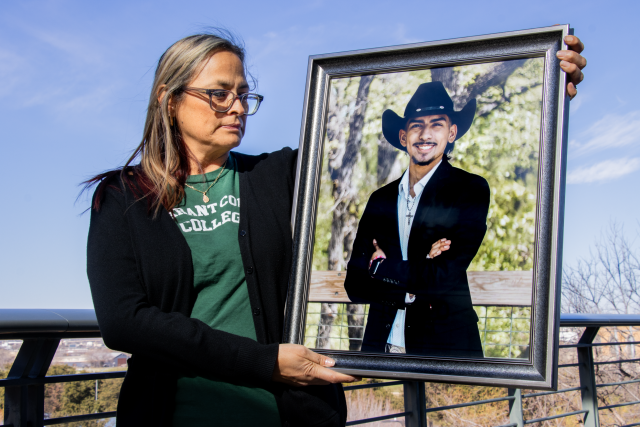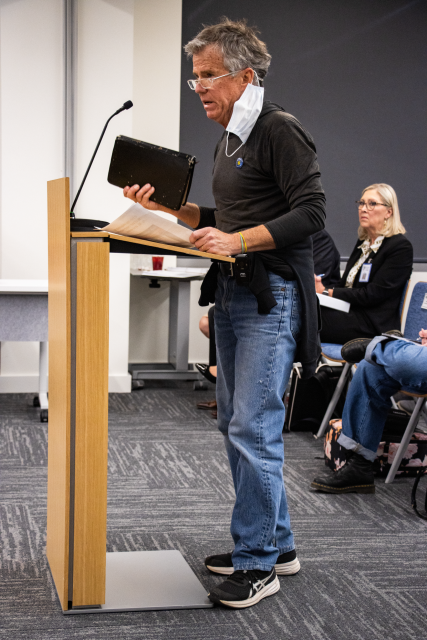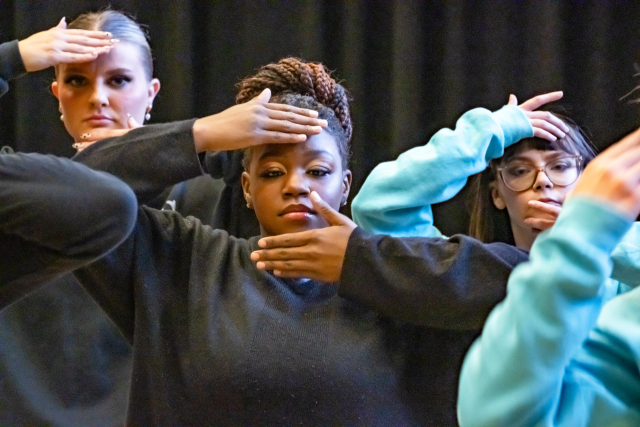FOUSIA ABDULLAHI
campus editor
fousia.abdullahi@my.tccd.edu
TCC updated its Academic Continuity Plan on Sept. 1, ensuring that school and administrative services would carry on regardless of disruptions.
The beginning of the semester brought many headaches for students, staff and faculty. Temperatures fell below freezing, with wind chills of up to negative 10 degrees. A wind chill advisory was issued by the National Weather Service as well as The Electric Reliability Council of Texas issuing weather-watch notifications. This forecasted significant weather, with higher electrical demand and the potential for lower reserves.
When it was announced that classes would begin as scheduled many students took to social media to air their anger and criticism of the school’s decision because of freezing temperature and lack of childcare.
“I felt a little disappointed is the best word to use for that,” said SE student Cheyenne Kingston. “It was a little difficult mostly for me due to the fact I have a 2-year-old son and I’m a single mom and his daycare was closed. I had the grace of my great aunt who is a 70-year-old woman, to opt to watch not only my child but my cousin’s.”
The ACP puts in place safeguards for many factors such as pandemic, weather or infrastructure failure like those that affected NW.
Other departments like administration and student services would also be able to continue supporting students and staff online or over the phone depending on the scenario.
“We learned a lot in the pandemic [about] the ability to provide services and instruction in a remote setting where possible.” said Vice Chancellor and Provost Shelly Pearson. “It is actually much preferable to shutting down.”
Each instructor is responsible for informing students of how class will be conducted in case of disruptions. The main goal is to ensure that learning occurs online either synchronously or asynchronously.
“we’ve been doing a lot of communication out to the campuses, to the faculty, to campus leadership on different types of scenarios,” said Pearson. “What responsibilities are but the overall purpose is to keep the business going, to keep instruction and for the students.”
The roads had cleared up in most places except for a few patches of ice. One of the other issues students faced was the extreme cold.
“I felt very underdressed,” Kingston said. “I usually run hot, so I just wear a thin jacket. I don’t really have a coat because, I mean, its Texas, I just hope that they will have food for thought next time It happens because I know in February there’s probably a bigger possibility.”
It was not only students who had concerns about coming to school. Staff members also had to think hard about making it to work.
“I’m a person who doesn’t drive, so I have my roommates who give me rides to school because they’re also students. So depending on that or how comfortable they feel depends on how, or if I can even get to my job,” said Saige Belden, a barista at Caffe Noliz and NE student.
“So whatever best fits their class, their situation, they’re free to do within general parameters,” Pearson said. “However, the primary thing that we stress is that they must communicate that out with students. Whatever would be due next time or however they want to handle that particular situation.”
The ACP is extensive and takes many factors and people to determine whether school stays open or goes online.
“The decision was made following a meeting of the Inclement Weather Team to report on weather, roadways, and conditions at TCC campuses and facilities”, said Reginald Gates, Vice Chancellor of Communications. “The Inclement Weather Team members include the Chancellor, the Chief Financial Officer, the Vice Chancellor and Provost, the Vice Chancellor for Communications and External Affairs, Police Department Executive Personnel, the Director of Facilities Operations, the District Director of Digital Strategy, and the Director of Emergency Management & Business Continuity.”
College brings together groups of students who may not all have the same tools they need for classes. In the past, the classes, especially during the COVID shutdown, provided devices for students to borrow from the library so they could continue their work.
“We have resources for the students,” said Pearson. “We just need to know that whether or not that student needs it and how to direct that student to those resources.”






































